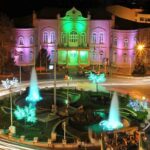
- Country: Iran
- City: Urmia
- Population: 735
- Area: 102 km2

Mayor: Reza Javan Kia
Reza Javan Kia has previously served as the mayor of District 1 of Urmia Municipality, deputy mayor for development, and municipal advisor.
Urmia is one of the metropolises of Iran and the capital of West Azerbaijan Province located in the northwest of Iran. This city is located at an altitude of 1,332 meters to the west of Lake Urmia, on the slopes of Mount Syr and in the middle of the Urmia Plain. The weather in Urmia is relatively hot in summer and cold in winter.
This city has many historical, ancient, natural, recreational and welfare monuments and is a very good destination for tourists in all seasons of the year.
Urmia is a city with very high agricultural potential and is considered one of the poles of agriculture and animal husbandry in the country.
No content available to display.